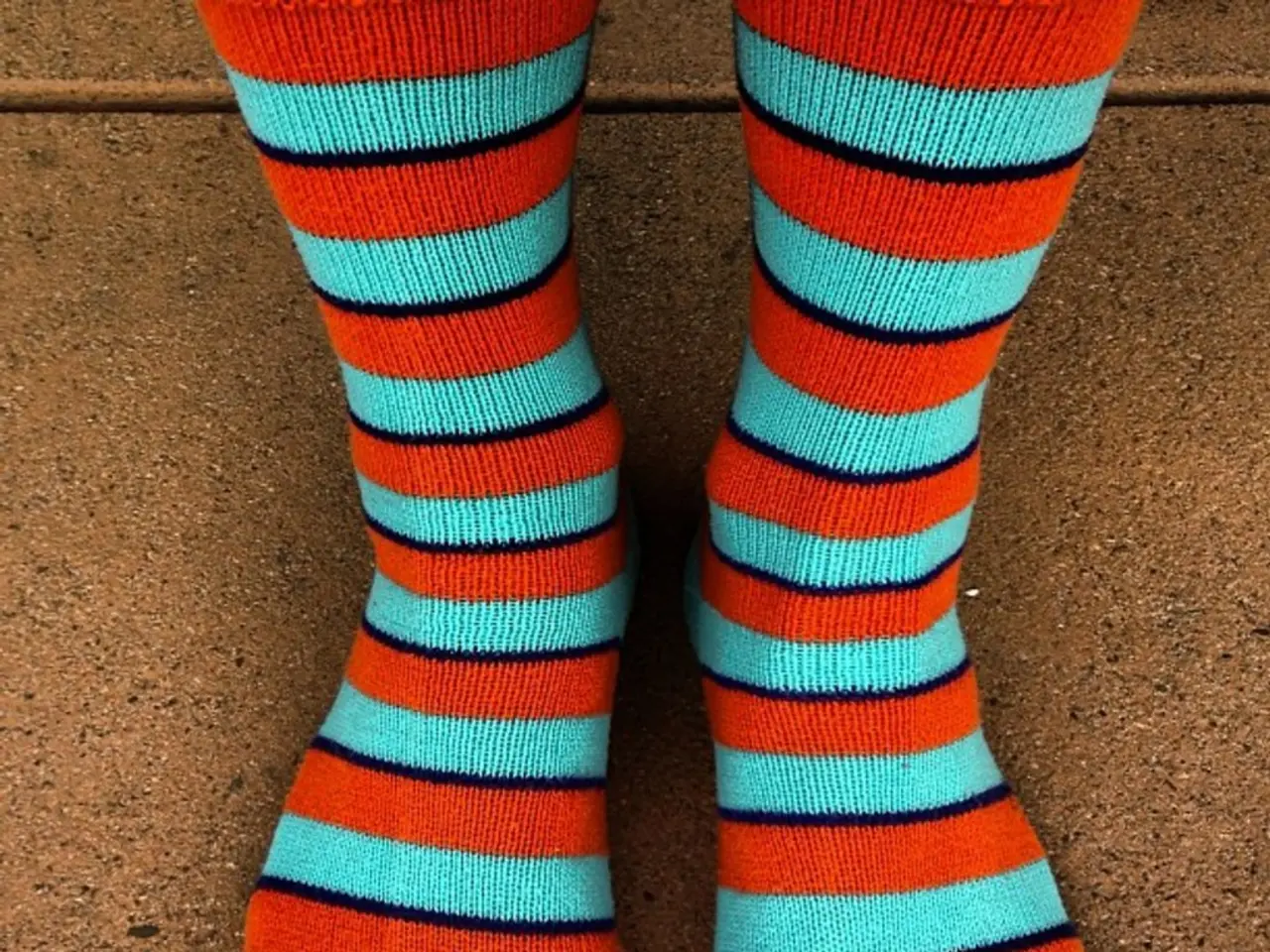Wearing Socks to Bed: Examining Advantages and Drawbacks
Wearing socks to bed may seem like a simple act, but it can have several health benefits, particularly in terms of temperature regulation and improved circulation. Here's a look at the scientific studies and benefits related to these areas, as well as how socks can help with conditions such as Raynaud's disease and hot flashes.
## Temperature Regulation
Research suggests that wearing socks can help regulate body temperature, promoting better sleep quality. Warm feet can hasten the onset of sleep and enhance overall restfulness, according to studies in 2007 and 2021 [1][3]. Improved sleep quality can also indirectly support cognitive functions by enhancing memory consolidation and processing during sleep [1].
## Raynaud's Symptoms
Raynaud's disease is a condition that affects the blood vessels in the skin, causing attacks when a person is feeling cold or stressed. Although there are no specific studies on wearing socks for Raynaud's, improved circulation from wearing socks could potentially help by maintaining warmer extremities. The principle of improved circulation from wearing socks can apply to Raynaud's patients, as it might help maintain blood flow to extremities, potentially alleviating symptoms by keeping the feet warm [1][3].
## Hot Flashes
Hot flashes are often associated with hormonal changes, particularly during menopause. Wearing socks can affect body temperature regulation, keeping the feet warm in cooler environments. However, in warmer conditions, it might exacerbate overheating and discomfort, which could worsen hot flashes. Choosing breathable socks is crucial to avoid overheating [3].
## Compression Socks
Compression socks are a type of sock that applies therapeutic pressure to improve circulation. They can help reduce symptoms of nocturia by improving circulation and reducing fluid retention in the legs. This can lead to better sleep quality by minimizing nighttime awakenings [2][5]. However, it is important not to wear compression socks in bed unless otherwise directed by a doctor.
In summary, wearing socks to sleep can improve sleep quality through temperature regulation and increased circulation, which might indirectly benefit conditions like Raynaud's by keeping extremities warm. For hot flashes, the impact is more nuanced and depends on maintaining a comfortable body temperature. Compression socks offer additional benefits by improving circulation and reducing nocturia symptoms.
It is important to note that while wearing socks can be beneficial, it is crucial to choose a pair that is not too tight, as this can reduce circulation. Additionally, it is typically suggested to keep bedrooms cool, between 60 and 67°F, for good temperature regulation in the body.
Wearing socks in bed may help with temperature regulation cycles, potentially aiding in falling asleep faster due to the body's internal temperature regulation. However, it is important not to overheat socks, as they can burn the skin and pose a fire hazard.
Sleep is a crucial part of human life, accounting for about a third of an average day. Not getting enough sleep can negatively impact concentration, memory, and mood, and can increase the risk of heart disease, depression, and obesity. The body's core temperature drops during the night, reaching its lowest around 4 a.m., with an average of 98.6 degrees Fahrenheit. Body temperature rises during the day, peaking in the late afternoon, and decreases during the night, making a person feel sleepy.
[1] American Sleep Association. (2021). Wearing Socks to Bed: What's the Science Behind It? Retrieved from https://www.sleepassociation.org/sleep-education/wearing-socks-to-bed-whats-the-science-behind-it/
[2] Mayo Clinic. (2021). Compression stockings and socks. Retrieved from https://www.mayoclinic.org/diseases-conditions/varicose-veins/in-depth/compression-stockings/art-20046118
[3] National Sleep Foundation. (2020). The Science of Sleep: How Your Body Temperature Affects Sleep. Retrieved from https://www.sleepfoundation.org/articles/science-sleep-how-your-body-temperature-affects-sleep
[4] National Institute of Health. (2015). What Is Sleep? Retrieved from https://www.nhlbi.nih.gov/health-topics/sleep
[5] National Kidney Foundation. (2021). Nocturia. Retrieved from https://www.kidney.org/atoz/content/nocturia
- Scientific research indicates that wearing socks may aid in regulating body temperature, potentially improving sleep quality.
- Warm feet can expedite the onset of sleep and enrich overall restfulness, according to studies in 2007 and 2021.
- Improved sleep quality can facilitate cognitive functions by bolstering memory consolidation and processing during sleep.
- Raynaud's disease, a condition affecting blood vessels in the skin, might see relief from symptoms with the help of socks thanks to increased circulation.
- Hot flashes, often linked to hormonal changes, can be influenced by body temperature regulation; however, wearing socks in warm conditions may worsen discomfort.
- Compression socks can reduce symptoms of nocturia by improving circulation and reducing fluid retention in the legs, leading to better sleep quality.
- It's important to choose socks that aren't too tight to prevent reducing circulation, and to keep bedroom temperatures between 60 and 67°F for good temperature regulation.
- Inadequate sleep can lead to various health issues, such as obesity, depression, and heart disease, and contributes to menopause-related symptoms like sleep disruptions and hot flashes.




